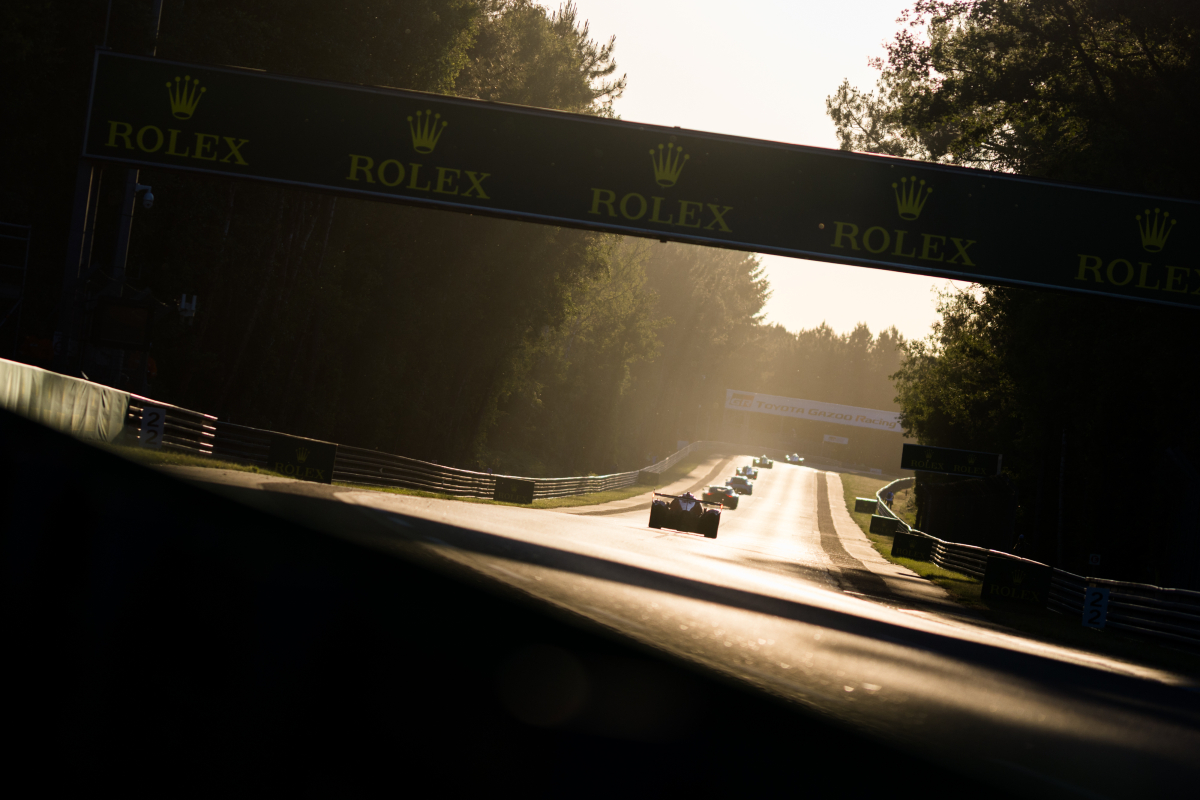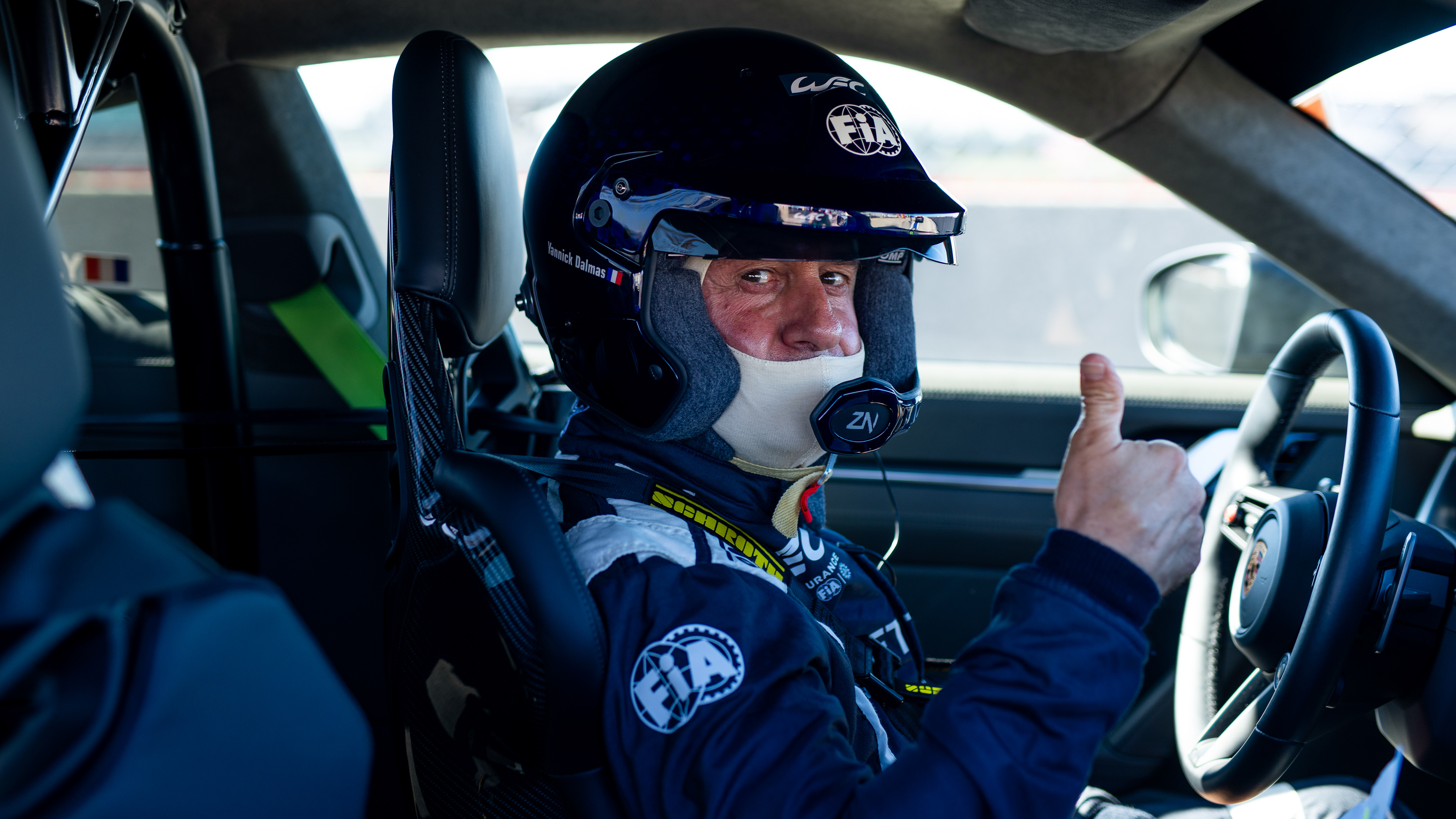
In the third of a five part series leading up to the big race from 10 – 11 June, we outline some intriguing moments, anecdotes, stats and facts from 100 fabulous years of the Le Mans 24 Hours.

41. BIG CAT PALPITATIONS: Everyone recalls the dramatic win for Jaguar in 1988 when Jan Lammers fought against gearbox issues but two years later there was an equally fraught ending for the Big Cat. That was when Price Cobb skated through the first chicane gravel at Mulsanne with fading brakes and then lost fourth gear in the final hours. It held together though ensuring that Cobb, along with John Nielsen and Martin Brundle (and not the unfortunate and initially registered Eliseo Salazar!) took their one and only Le Mans win together.
42. ECO-HEROES: Biofuels raced at Le Mans back in 1988 with a GT class Porsche 911 that ran on a petrol/ethanol mix. Then in 1995 the Team Giroix McLaren used biofuel made from sugar beet. But the Nasamax (Reynard) LMP car of 2003/04 was the first to use 100% renewable bioethanol fuel. Funded by a wealthy Hong-Kong based businessman and environmentalist, Tony King, the project was managed by John McNeil, who had provided the Ascari A410 project from 2000 to 2003. The car qualified a highly creditable 14th and finished seventh in 2004.
43. TRUFFLE HUNTERS: In 1971 Porsche ran a car that was painted pink and outlined cuts of meat in German: it was nicknamed, famously, the "Pink Pig". Driven by Reinhold Joest and Willi Kauhsen, the Porsche 917/20 was running strongly in the top six when it retired shortly before the end of the race when an accident halted the truffle hunting!
44. TOUGH START: 1980 Le Mans winner Jean Rondeau, who was the last of the true independents to win Le Mans, had an undistinguished start to his Le Mans journey. His rookie race in 1972 with Guy Edwards in a Chevron-Cosworth B21 lasted only four hours and included Rondeau being dazed after he hit a bird on the Mulsanne and then the engine blowing up spectacularly at Maison Blanche.
45. BIRD BRAIN! Rondeau earned the unfortunate nickname of ‘Bird Brain’ in subsequent years but had the last laugh when he and Jean-Pierre Jaussaud took their Rondeau M379 to victory in 1980. This was despite a last lap spin! The pair were received by President Valéry Giscard d’Estaing at the Élysée Palace and entertained with a sumptuous dinner and national hero status.
46. YANNICK THE UNIQUE: The WEC’s own Yannick Dalmas holds a unique place in Le Mans history as being the only driver to win with four different manufacturers. These were Peugeot in 1992, Porsche in 1994, McLaren in 1995 and BMW in 1999.

47. THE STREAKS! Manufacturers often win in multiple years, or streaks as they are known in the U.S. Porsche tops the pile with seven consecutive wins (1981-1987), Ferrari with six (1960-1965), and Audi claimed five-in-a-row twice (2004-2008, 2010-2014), while most recently Toyota have mastered five from 2018 to 2022.
48. WHO ARE THEY? Some drivers have used pseudonyms in sportscar racing over the years but some have been stranger than others. There was the well-known ‘Johnny Dumfries’ real name John Colum Crichton-Stuart, the 7th Marquis of Bute; ‘Stingbrace’ who was really up-market restraunteur Stefano Sebastiani; ‘Pal Joe’ (real name Gianfranco Palazzoli), who took his name from the 1957 comedy musical starring Rita Hayworth and Frank Sinatra; and sometime obscure F1 driver Patrick Gaillard who was often entered simply as ‘Panic’!
49. TRIPLE ACES: Hans Hermann was the first driver to win the unofficial endurance racing triple crown when he took victory in the 1970 Le Mans, the first ever for Porsche. Prior to that Hermann had won at Sebring in 1960 and 1968 and at Daytona in ’68 as well. AJ Foyt was the second driver to achieve the same feat when his 1985 wins at Sebring and Daytona added to his famous 1967 victory at La Sarthe.
50. DEBUT DELIGHTS: Only three manufacturers have won on their Le Mans debut. These are Chenard & Walcker (obviously!) in 1923, Ferrari in 1949 and McLaren in 1995.
51. HENRI THE HERO: Will Henri Pescarolo’s remarkable 33 starts at Le Mans ever be beaten? It seems unlikely. To put it in to perspective Pescarolo’s Le Mans history as a driver spanned from 1966 to 1999, with only one year missed, in 1969 through injury. Should Josh Pierson, the youngest ever starter at Le Mans fancy a crack at beating Monsieur Pescarolo’s record, and providing he does it concurrently, his 34th Le Mans would come in 2055!
52. SONS AND HEIRS: Sons of famous acting and political figures have featured at Le Mans over the years including Mark Thatcher, son of British prime minister Margaret. He failed to finish in 1980 in an Osella Group 6 car he shared with Lella Lombardi. Paul Belmondo, son of the late French acting legend Jean-Paul Belmondo, competed in 10 races at La Sarthe, scoring a best placing of third in LMP2 at his last attempt in 2005. David Halliday, later to be known as David Smet, was the son of legendary French musician Johnny Halliday has five Le Mans’ under his belt with a best result of seventh after the 2003 race in the GT1 category.
53. BON APPETIT! Since 1928, the Génissel family made the L’Auberge Les Hunaudieres between Tertre Rouge and Mulsanne Corner a popular place to watch racing cars go by at full speed. François Génissel and then his illustrious son Maurice welcomed spectators, teams and drivers to their restaurant, among these being the great Juan-Manuel Fangio, French hero Maurice Trintignant and Jacky Ickx. The Auberge des Hunaudières also held some memorable celebrations, particularly of the Matra and Renault victories in the 1970s. The L’Auberge is still operating today with patrons still able to watch the cars flash by as the head towards the first chicane.
54. GOING SOLO!: Edward Ramsden Hall became the first (and only) driver to go solo for the entire distance of Le Mans, when he completed 236 laps of La Sarthe in 1950 aboard his self-entered Bentley Corniche. That lap count meant he drove for 3,200 km (2,000 miles) non-stop. When asked by legendary motorsport journalist Denis Jenkinson what his toilet arrangements were Hall replied, "Green overalls, old boy!"
55. REPORTING FOR DUTY: Several journalists and broadcasters have raced at Le Mans over the years with by far the most successful being Paul Frere. He was a racer turned journalist who covered the race for various publications after winning it 1960 with fellow Belgian endurance ace Olivier Gendebien. Patrick Bedard, a U.S journalist also took part in the great race in 1982, while British writers and broadcasters Tony Dron (Group 4 GT class winner in 1982) and Amanda Stretton (2008) also made appearances.
56. THE CASABLANCA FLYER: For a nation that doesn’t have a huge pedigree in global motorsport, Morocco produced one of Le Mans’ most prolific drivers in Max Cohen-Olivar who took part in 23 Le Mans’ between 1971 and 2001. He scored three class podiums with his best result coming in the 1982 race when he placed second in the Group 5 class in a Lancia Beta Monte Carlo.
57. LOCAL HEROINE: By far the most successful female racer at Le Mans is Anne-Charlotte Verney who took three class podiums in 1978, 1979 and 1981 during her ten appearances at the big race. Verney’s grandfather, Louis Verney, was one of the founding administrators of the 24 Hours of Le Mans and she was brought up locally, living in Le Mans for several years.
58. LIGHTS, CAMERA, ACTION! Verney shared a Porsche 935 at Le Mans in 1980 with famed actor Jean-Louis Trintignant, who starred alongside Brigitte Bardot in the 1956 classic ‘And God Created Woman’. Trintignant, the nephew of 1954 Le Mans winner Maurice Trintignant, was unable to get a finish.
59. THE NUMBER GAME: Of the 23 races in the 21st century, 21 of them have seen the winner complete a different number of laps. In 2004 and 2014 the winner completed 379 laps, whilst in 2006 and 2022 the winning total was 380. The other winning totals have been between 321 laps (2001) and 397 laps (2010).
60. RECORD WEC ENTRY: 16 Hypercars at Le Mans 2023 is a new WEC top-class record, overtaking the previous high of 14 from the 2015 race, or the most top-class entries at Le Mans since 17 LMP1s in 2011. 13 of these cars are Hybrids, which also beats the previous high of 11 from both the 2015 race, and Spa 2023.
Click HERE for the previous installment of Le Mans-based facts.